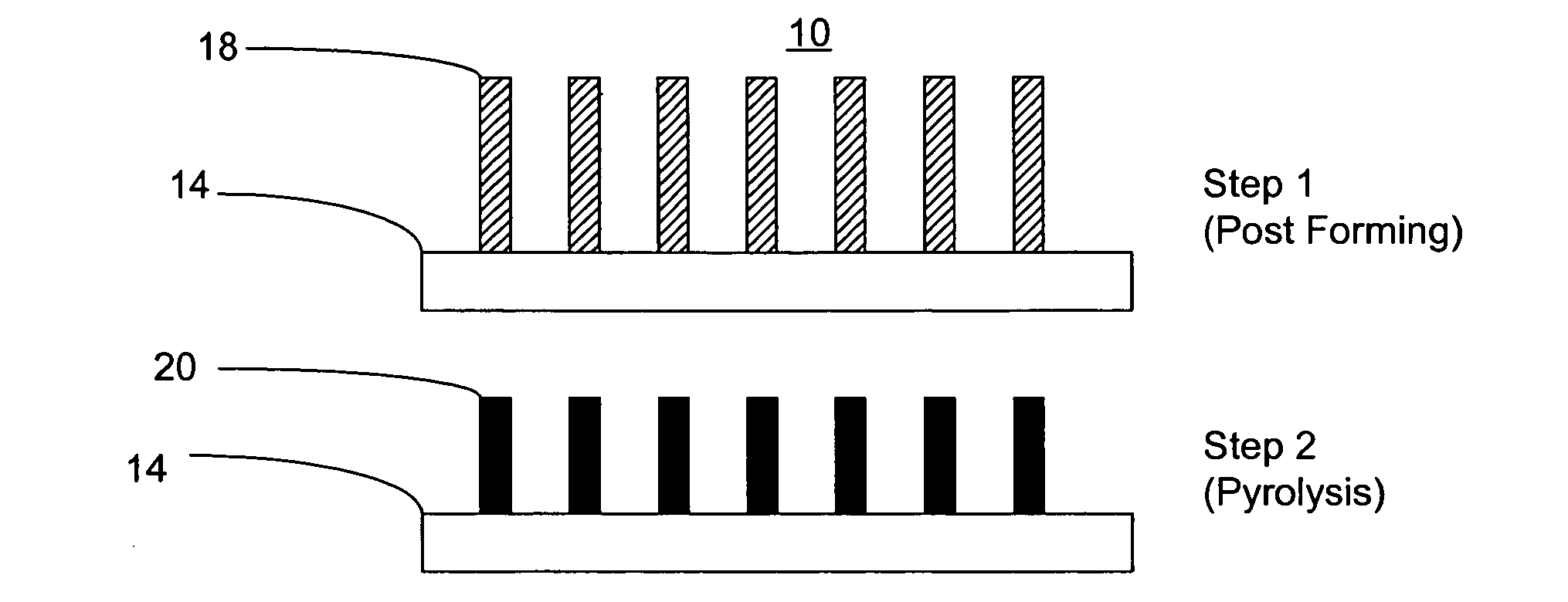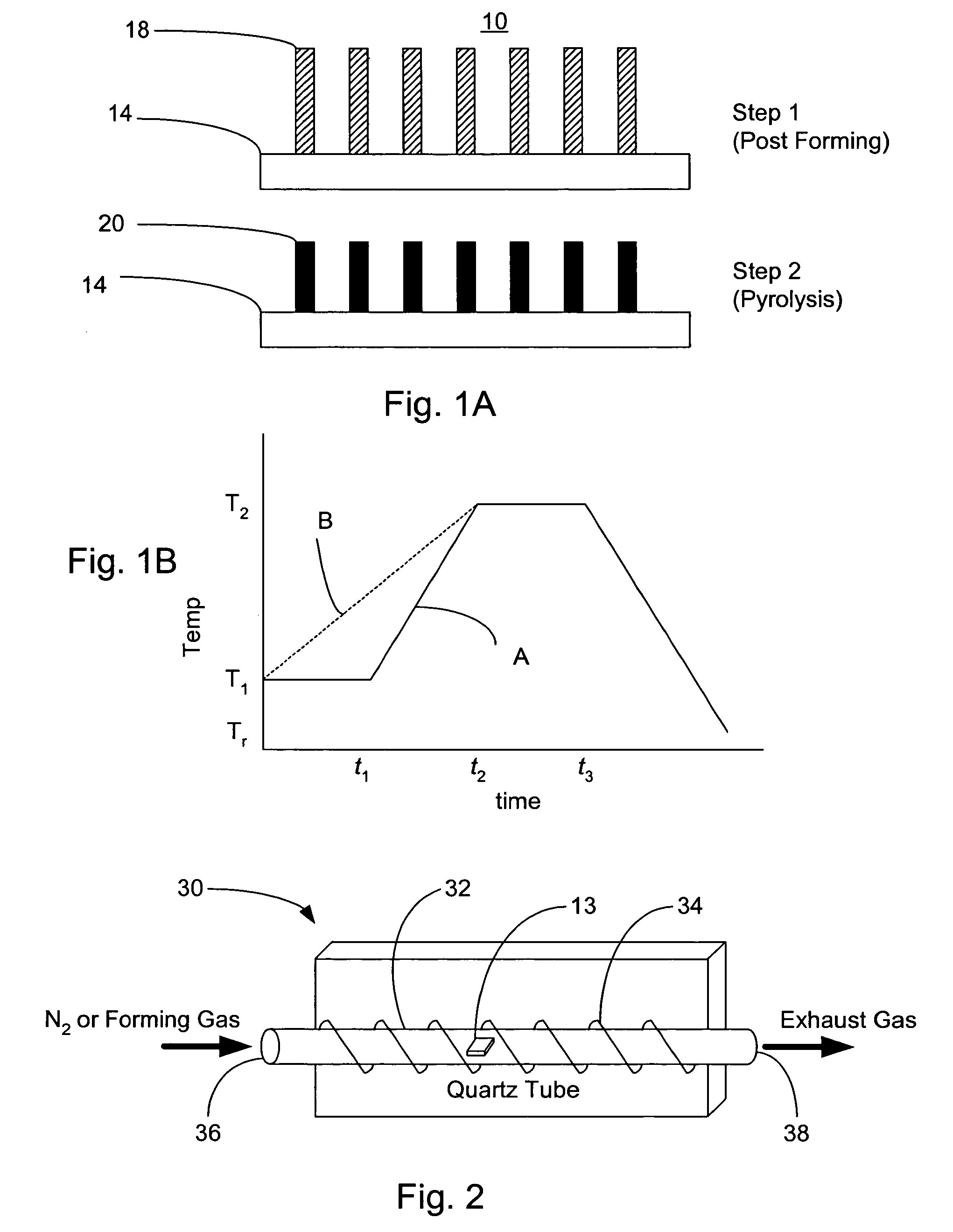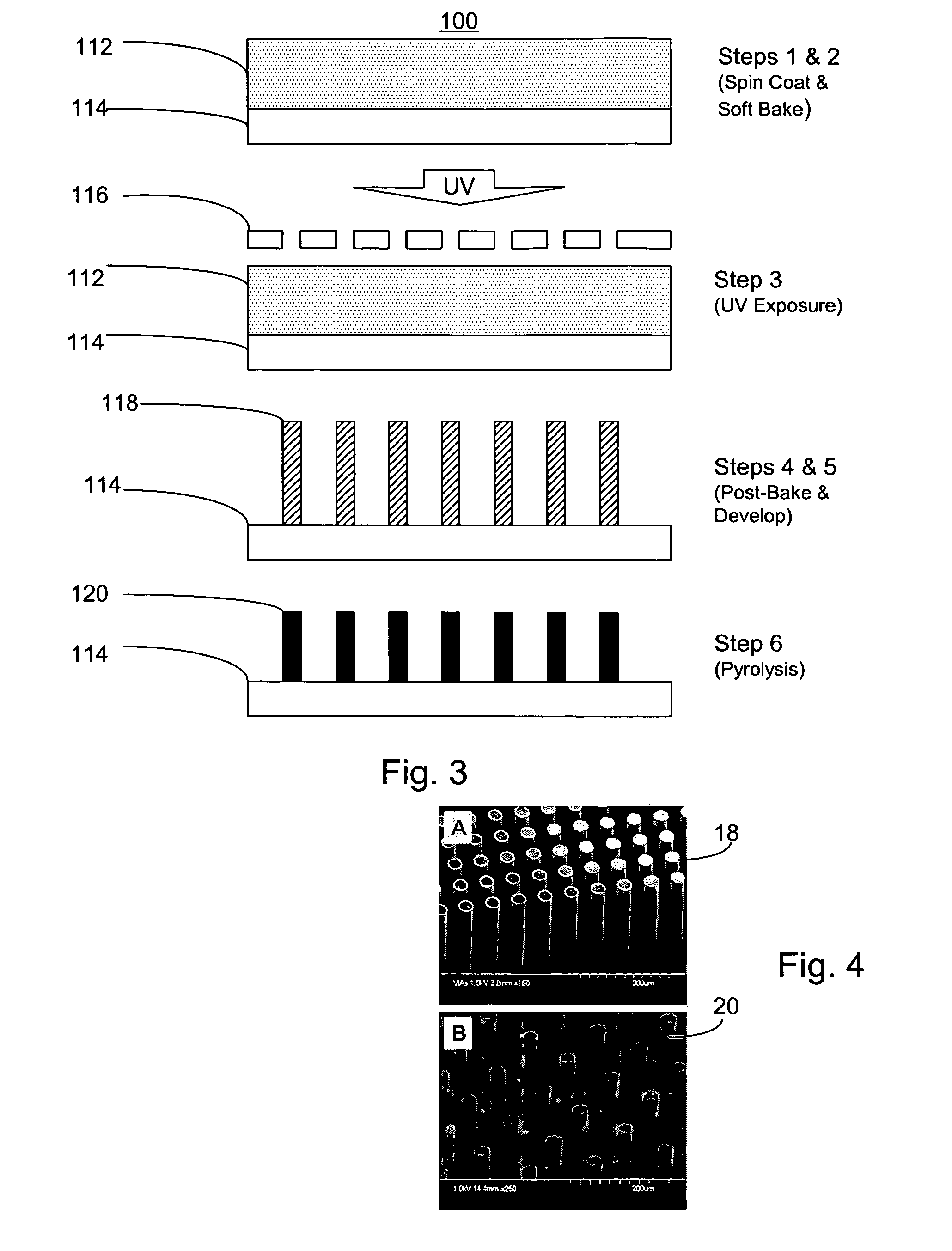Surface and composition enhancements to high aspect ratio C-MEMS
a technology of c-mems and surface enhancement, applied in the field of carbon microelectromechanical systems, can solve the problems of poor repeatability of carbon composition, low feature resolution, time-consuming and expensive, etc., and achieve high aspect ratio and/or nanoscale surface enhancement, high surface area, and improved system and method for producing such structures
- Summary
- Abstract
- Description
- Claims
- Application Information
AI Technical Summary
Benefits of technology
Problems solved by technology
Method used
Image
Examples
Embodiment Construction
[0034]Referring in detail to the figures, the systems and methods described herein facilitate the production of high aspect ratio carbon-micro-electro-mechanical systems (C-MEMS) structures, as well as C-MEMS structures with nanoscale surface enhancements thereto. In one embodiment, as depicted in FIGS. 1A and 1B, high aspect ratio carbon posts, having aspect ratios greater than 10:1, are microfabricated by pyrolyzing polymer posts patterned from a carbon precursor polymer. In step 1 of the process 10, polymer posts 18 are patterned or formed in an array on a substrate 14. The posts 18 can be formed by a variety of processes including, but not limited to, photolithography, soft lithography methods including stamping or micro contact printing, hot embossing or nanoimprinting, step and flash lithography, micro injection molding and the like, silk screening, spray deposition techniques including plasma spraying and the like, self-assembly of malleable polymers and liquids using electri...
PUM
| Property | Measurement | Unit |
|---|---|---|
| thick | aaaaa | aaaaa |
| diameter | aaaaa | aaaaa |
| thickness | aaaaa | aaaaa |
Abstract
Description
Claims
Application Information
 Login to View More
Login to View More - R&D
- Intellectual Property
- Life Sciences
- Materials
- Tech Scout
- Unparalleled Data Quality
- Higher Quality Content
- 60% Fewer Hallucinations
Browse by: Latest US Patents, China's latest patents, Technical Efficacy Thesaurus, Application Domain, Technology Topic, Popular Technical Reports.
© 2025 PatSnap. All rights reserved.Legal|Privacy policy|Modern Slavery Act Transparency Statement|Sitemap|About US| Contact US: help@patsnap.com



